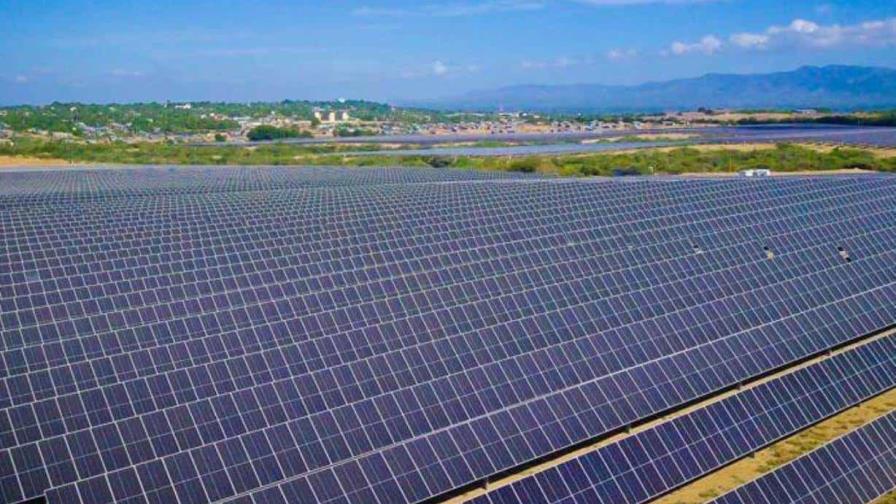
- The Ministry of Energy highlights that over 1,300 MW of photovoltaic projects are under construction in different regions of the country.
The Ministry of Energy and Mines (MEM) asserts that the Dominican Republic has made progress towards achieving energy transition, with a significant acceleration in the inclusion of renewable projects over the past four years.
In a press release, the ministry reiterates that the transition has had its most significant impact during the current administration, increasing renewable energy generation capacity from 555.5 megawatts (MW) in 2020 to 1,126.25 MW by 2023. “This represents a growth of over 103% in three years,” it states.
“The energy transition means moving away from an electricity production system based on the combustion of coal, petroleum derivatives, and natural gas — known as fossil fuels — towards a reality where renewable and clean sources such as water, sun, wind, biomass, and others dominate or have a greater share,” defines the entity.
It also specifies that over 1,300 MW in photovoltaic projects are currently under construction in various regions of the country. “It is noteworthy that during the period between 9:00 AM and 1:00 PM, renewable sources frequently contribute over 35% to the system, with approximately 890 MW,” it emphasizes.
The MEM highlights that the integration of clean energy sources is contributing to a reduction in spot market prices and a decrease in fossil fuel consumption and imports, leading to lower pollution and significantly reduced foreign energy dependence.
Amendment to incentives law
It recalls that President Luis Abinader issued Decree 65-23, which modifies and updates the regulation for the application of the Renewable Energy Incentives Law (Law 57-07). “This decree strengthens transparency in the renewable contracting processes and eliminates elements of discretion and uncertainty,” it underscores in the statement.
Transparency and reduction of bureaucratic times by the Ministry of Energy and Mines and the National Energy Commission have been crucial for the trend in both foreign and local investment in renewable projects. “In 2023, for example, foreign direct investment in energy in the country, alongside tourism, led the development of the national economy, totaling $1.071 billion,” it notes.
“According to the 2023 Climatescope Ranking by Bloomberg New Energy Finance (BNEF), which evaluates and ranks the most attractive markets for foreign investment in energy transition, the Dominican Republic has improved its international position since 2022, moving from 45th to 43rd out of 140 countries,” it adds.
Within emerging markets, the ministry explains that it has risen from 22nd to 20th out of 110 nations, and within the Latin America and Caribbean region, it has advanced from 7th to 6th place.
It assures that these achievements have been recognized by international organizations such as the Latin American Energy Organization (OLADE) and the International Renewable Energy Agency (IRENA).
Additionally, the Dominican Republic hosted the Sixth Ministerial Meeting of the Energy and Climate Partnership of the Americas (ECPA), playing a significant leadership role among global energy actors in the region.
For 2023, the World Economic Forum, which evaluates and compares countries’ performance in transitioning to a sustainable energy system, ranked the Dominican Republic 88th globally among countries analyzed, with a score of 50.7, marking its “best position” in the last nine years.
International cooperation for enhancing the country’s image
The Ministry of Energy documents a series of activities aimed at strengthening the country’s image. “Last week, Minister Antonio Almonte was invited, alongside other Caribbean Energy Ministers, to the European Union headquarters to explore new collaboration avenues stemming from initiatives such as Global Gateway and the Euroclima program.
It also notes its leadership in joining the Powering Past Coal Alliance (PPCA), providing access to climate financing and global investment in clean energy led by the UK and Canada.
In conclusion, beyond certain interpretations influenced by indicators of limited relevance to the actual dynamics of energy production and usage, the concrete results and multiple recognitions from stakeholders demonstrate that the Dominican energy transition is advancing swiftly and firmly.
Source:



